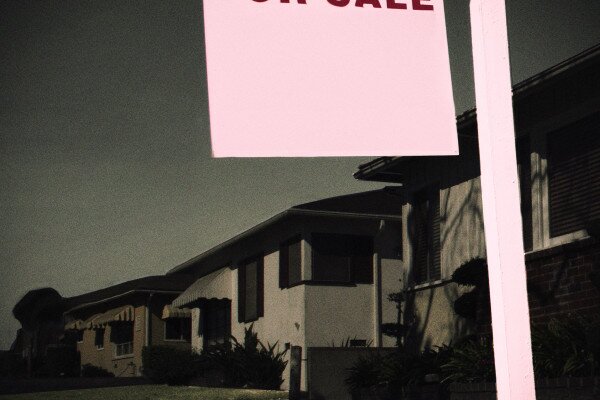Jenji Kohan’s silver screen portrayal of Piper Kerman’s memoir Orange is the New Black restored my faith in the power of TV. Orange is the New Black takes on sensitive issues, previously considered both not safe for TV, and rarely tackled outside affected inner circles. Where Breaking Bad follows the travails of a meth dealer and The Newsroom spiraled into a web of stories unrelated to a newsroom, Orange is the New Black (OITNB) dives head first into a discussion on gay and transgender rights, the criminal justice system and the origins of crime. It is a deeply revelatory journey into a realm unfamiliar to most.

(Image via… )
The prison system at its most fundamental level, seeks to rehabilitate inmates who committed crimes for which they have been charged and convicted. An effective prison system, therefore, deters future crime (recidivism) while leading inmates on their way to becoming contributing members of society. In the United States, the system does not work. Here’s a few eye-opening statistics about criminal justice and prison shortcomings: the United States has 5% of the world’s population and 25% of its prison population; States spend more on those prisoners than they do on educating students.; and, Sesame Street has now introduced a muppet with an incarcerated parent since 1 in 28 American children can now directly relate.
OITNB exposes many of these flaws. A Pew Research Center study in 2011 found a staggering 40+% of inmates commit a crime within three years of their release. In the show, an inmate set free after an appeal soon finds herself back behind bars and recounts a harrowing experience of fruitless job interviews, re-entry into a world of poverty, and a lack of practical skills to apply. As prison funding dries up, detention facilities have been forced to cut back on educational programs that prepare inmates for a life of freedom. Combined with a societal stigmatization of individuals with a criminal record, it is clear why recidivism occurs.
OITNB not-so-subtly takes on prison stigmas while emphasizing that just because a person commits a crime does not make them an inherently criminal individual. Crimes occur out of short-sightedness, passion and desperation as much as cold-blood or rebellion. The most powerful, inflective segment of the show is the flashbacks that show the characters avenging a sexual assault of a child, participating in a robbery as a means to fit in, and transferring drug money in the heat of young love. One previously homeless inmate writes down the debts she owes to people she stole from that she seeks to repay. Perception is not reality.
Next, take the scenes of solitary confinement with a prisoner thrown into a moribund cement pen for an indefinite period of time. It is a treatment many experts consider torture leading to paranoia, panic attacks, and worsening of mental health conditions which make prisoners psychologically unable to effectively rejoin society. A recent New York Times report indicates that in New York City 1 in every 12 inmates lives in solitary confinement. Mental health deterioration does not end here.
Inmates, such as “Crazy Eyes,” struggle with other mental health conditions. A sweet, charming, well-intentioned woman, she deals with symptoms that are of no fault of her own. Rather than receive proper medical treatment for her condition, she is thrown to the prison’s mental health ward, where in her own words she is “medicated and tied down like a balloon.” Organizations such as the American Civil Liberties Union have expressed dismay with the approach to mental health in prisons and cite programs that have worked on a case-by-case basis. Without federal funding, such programs became near impossible to institute.
On top of all these storylines, we see the prison change hormone prescriptions for a transgender individual against her wishes, pervasive sexual harassment by the largely male staff, and profound homophobia. It never ends; each episode challenges viewers to think about issues they may not have previously analyzed.
Most of the issues addressed in the show, like poverty, gay rights, and a sexual harassment culture expand way outside the concrete cells and barbed wire of prison. Television shows have a power to convey a message and move the dial of public opinion in a manner cable, network or print news cannot. Ms. Kohan does not make the prisoners victims; rather, he reinforces their humanity. That makes the show relatable, and absorbable. Orange is the New Black has set forth a conversation about the issues it addresses; more shows can and must seek to do the same.
By




Andrea
All this is right on, and the other dimension of the show that really works is that it’s FUNNY. The characters are humorous without being caricatures, and the writing is smart and witty without trying too hard like, say, The Newsroom. Can’t wait for season 2!
Jess
While your article is wonderful and indeed highlights all of the things that I love about this show. I just wanted to point out that the creator of the show, Jenji Kohan is a woman!
Work got you down? Watch these 5 flicks to fix it! | Sweet Lemon Media
[…] with crystal encrusted gowns, smushy-faced pugs, and enough self-tanner to paint the moon orange. (Orange is the new black, amiright?) This documentary give viewers a behind the scenes peak into the fabulous life of […]